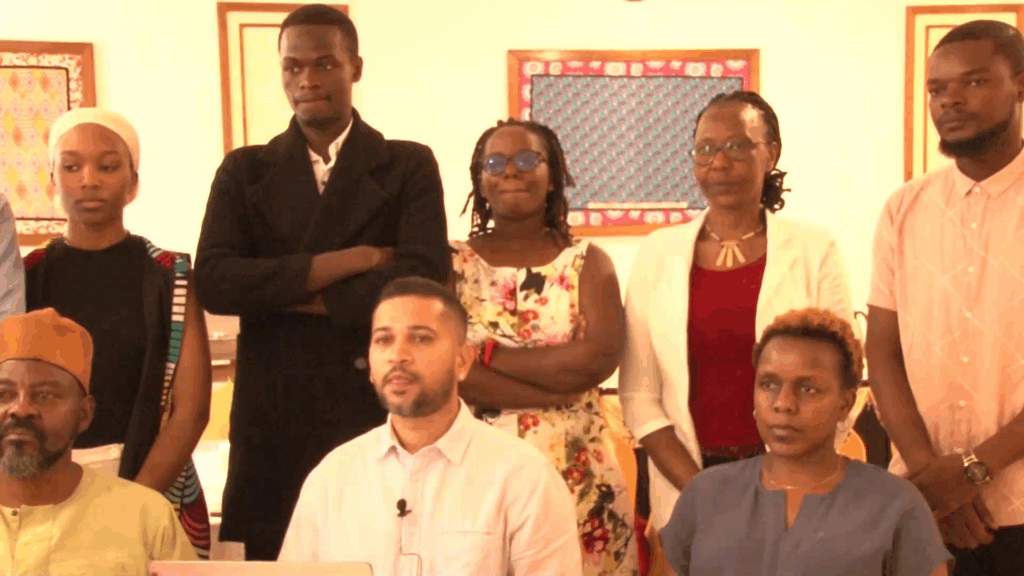By Alloys Musyoka
Issues of climate change, dumped soaked diapers and unattended mined areas in Kilifi and Kwale counties have been cited as main contributors to increase in Malaria cases in the coastal region.
The issues were raised in the lead-up to World Malaria Day, stakeholders from across Kenya’s coastal region convened in Kwale County to address the escalating malaria threat intensified by climate change.
The meeting was organized by the malaria constituency of the global fund Kenya country coordinating mechanism to strengthen Coastal Networks on Malaria and Climate Change.
Among those who attended the media breakfast meeting in Kwale include civil society leaders, health experts, and policymakers to strengthen strategize on combating malaria’s persistent grip on the region.
The Malaria Representative of the Country Coordinating Mechanism for the Global Fund and a member of the End Malaria Council and Fund, Ms. Eva Muthuuri, said that there is a need for targeted interventions.
“Malaria at the Coast and country wide is no longer just a health issue it’s a climate justice issue. We must ensure that malaria services, information and commodities reach the last mile and that data reflects the shifting burden as driven by the climate crisis in today’s world.” She said.
The Kwale county event comes hot on the heels of the just concluded Global Fund KCM -Malaria constituency engagement for non-state actors in the coastal region.
Strengthening Community Partnership and Empowerment (SCOPE) CEO, Jasho Bomu, painted a picture of a region which is highly affected and required a concerted effort to address the Malaria problem.
“In 2023, Kenya reported over 3.3 million malaria cases, with coastal and lake endemic regions bearing the brunt. Our warm temperatures and seasonal rainfall create ideal breeding grounds for mosquitoes, making malaria a relentless adversary in our communities. “he said.
Climate change worsens the challenges with rising temperatures and unpredictable rainfall patterns extending malaria transmission seasons and expanded mosquito habitats.
A spatial analysis published in Science Direct indicates that 11 percent of malaria cases are concentrated in coastal endemic zones, underscoring the region’s vulnerability.
The Kenya Malaria Strategy 2023–2027 aims for an 80 percent reduction in malaria incidence and a 90% reduction in deaths by 2027/28.
Achieving these targets requires concerted efforts, especially in high-burden areas like the coast.
Community engagement is paramount, focusing on early diagnosis, integrated vector management, and community mobilization.
Kenya currently faces a malaria funding shortfall estimated at Ksh25 million.
Bridging this gap is essential to scaling up interventions and reaching vulnerable populations.
Speaking at the event Roneek Vora, a Member of End Malaria Council, Kenya and the Director Sales and Marketing and Marketing at Revital Healthcare said that as a private sector player, “we have taken a decisive step towards combating this menace by establishing Africa’s largest rapid diagnostic test (RDT) manufacturing facility.
The state-of-the-art plant boasts a production capacity of 20 million test kits per month, including those for malaria, HIV, hepatitis, dengue, and syphilis. “In fact, our facility has already created 200 new full-time jobs, with 80% of these positions filled by women, including individuals who are speech and hearing impaired,” he added.
Private sector partnerships are playing a pivotal role. SC Johnson has invested over $10 million in its Nairobi manufacturing facility to produce up to 20 million units annually of its Guardian™ spatial repellent, aiding malaria prevention efforts.
Additionally, the company has partnered with the End Malaria Council Kenya to distribute repellents through community health workers and clinics, and to build new health clinics in rural areas.
As the world observes World Malaria Day, the message from Kenya’s coast is clear: climate change may fuel malaria, but united community action can overcome it.


